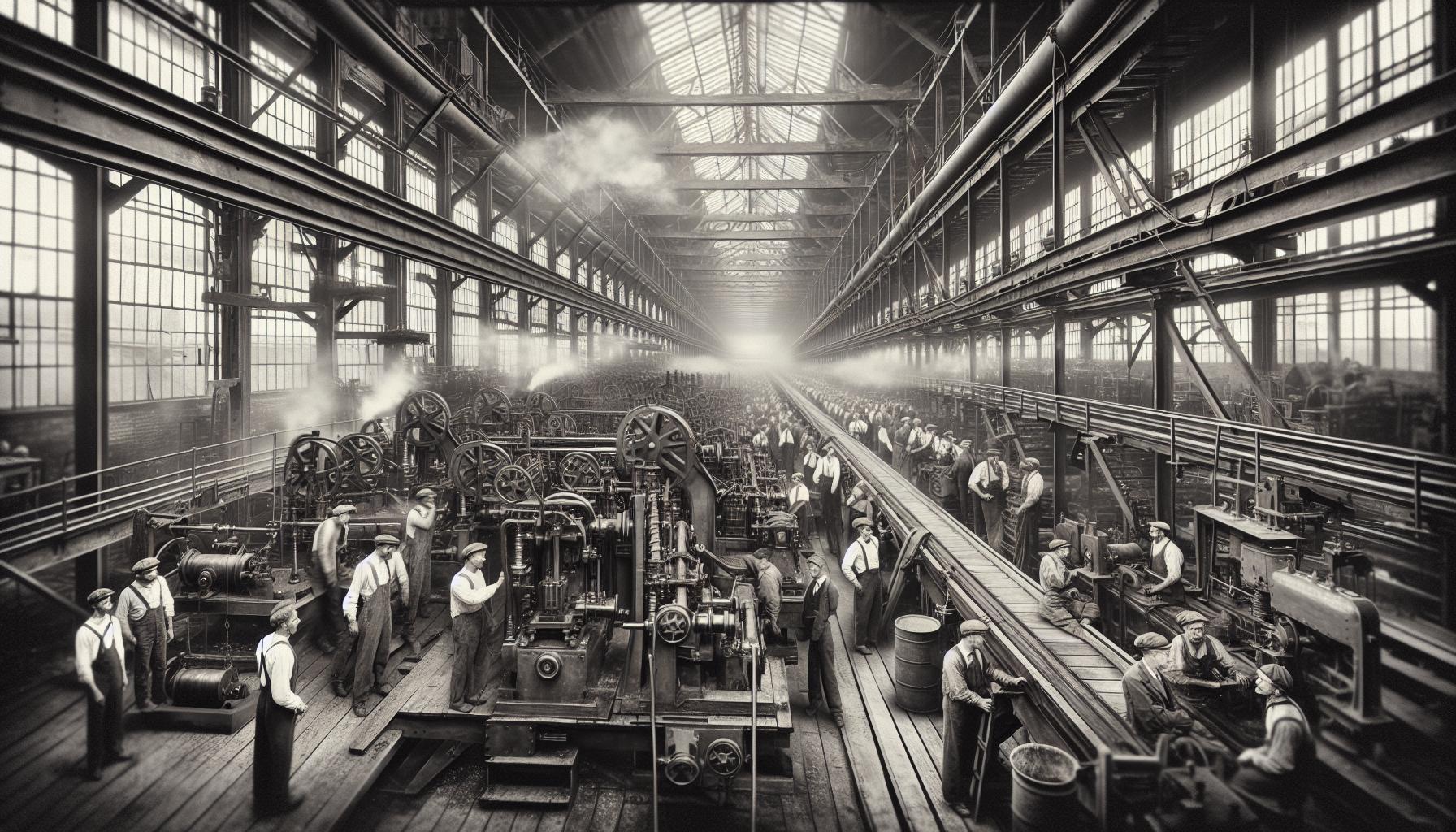The Industrial Revolution didn’t just change factories—it transformed the world. From steam engines puffing up to bustling cities, each phase brought innovations that reshaped everyday life. Imagine a time when horse-drawn carriages were the peak of transportation, and suddenly, machines took over!
Fases da Revolução Industrial: Resumo
The Industrial Revolution comprises several phases, each marked by significant technological advancements and societal transformations.
| Phase | Timeframe | Key Innovations | Societal Impact |
|---|---|---|---|
| Mechanization and Textiles | Late 18th – Early 19th C | Steam engines, spinning jenny, power loom | Increased production, urbanization |
| Railways and Steel Production | Mid – Late 19th C | Bessemer process, railway expansion | Enhanced transportation, industrial growth |
| Electrical Power and Mass Production | Late 19th – Early 20th C | Electric power, assembly line | Improved efficiency, consumer goods availability |
| Digital Revolution and Automation | Late 20th C – Present | Computers, automation, IT systems | Enhanced productivity, information economy |
First Phase: The First Industrial Revolution

The First Industrial Revolution transitioned societies from agrarian economies to industrial powerhouses. This era introduced groundbreaking technologies that reshaped industries and daily life.
Key Innovations
- Steam Engines: Revolutionized energy production, enabling continuous factory operations.
- Power Looms: Increased textile production, reducing labor costs and manufacturing time.
- Spinning Jenny: Allowed multiple spindles to operate simultaneously, enhancing yarn output.
- Coke Smelting: Improved iron-making techniques, producing stronger and more durable materials.
- Early Railroads: Expanded transportation networks, linking factories with markets and resources.
- Increased Production: Factories boosted industrial productivity, leading to higher output levels.
- Urbanization: Rapid migration from rural areas to urban centers created bustling industrial hubs.
- Job Creation: Numerous employment opportunities emerged in manufacturing and related sectors.
- Infrastructure Development: Enhanced transportation reduced costs and expanded market reach.
- Economic Growth: The rise in key industries significantly contributed to national GDP expansion.
Second Phase: The Second Industrial Revolution

The Second Industrial Revolution accelerated industrial growth through significant technological and social changes. This phase introduced innovations that transformed industries and everyday life.
Technological Advancements
Advancements like the Bessemer process revolutionized steel production, reducing costs and increasing availability. Electricity became a primary energy source, powering factories and lighting cities. Innovations in chemical manufacturing led to new materials and products, including synthetic dyes and pharmaceuticals. The development of the internal combustion engine enabled the creation of automobiles and improved transportation. Telecommunications progressed with the invention of the telephone and telegraph, enhancing communication across distances. Moreover, the assembly line method, pioneered by Henry Ford, streamlined production processes, increasing efficiency and output in manufacturing industries.
Social Changes
Urbanization surged as people migrated to cities for factory jobs, reshaping population distributions. Labor movements gained momentum, advocating for workers’ rights and better working conditions. Education and skill development became priorities, supporting the demands of a technologically advanced economy. Improved transportation networks connected communities, fostering economic and social interactions. Living standards increased for many, with access to consumer goods expanding. However, social disparities also emerged, highlighting the need for reforms and equitable growth. These changes collectively influenced societal structures, contributing to modern industrialized nations.
Third Phase: The Third Industrial Revolution

The Third Industrial Revolution, also known as the Digital Revolution, transformed industries through digital technology integration. It marked a shift from analog systems to digital platforms, enhancing efficiency and innovation.
Digital Transformation
Digital transformation reshaped manufacturing and services by implementing advanced computing and automation technologies. Computers streamlined processes, minimizing errors and boosting productivity. Automation provided precise control over production lines, reducing downtime and operational costs. The internet enabled real-time data exchange, fostering collaboration and innovation. Cloud computing offered scalable resources, supporting business growth and flexibility. Artificial intelligence and machine learning optimized decision-making and predictive maintenance. These technologies increased industry competitiveness, driving economic growth and technological advancement.
Globalization Effects
Globalization during the Third Industrial Revolution connected global markets and industries, creating a more integrated economy. Enhanced communication technologies eliminated geographical barriers, allowing instant information exchange and coordination. Expanded global supply chains enabled efficient sourcing of materials and labor, lowering costs and increasing market access. International trade agreements and multinational corporations facilitated the movement of goods, services, and capital. This interconnectedness promoted cultural exchange and innovation, fostering economic interdependence among nations. However, it also led to increased competition, the need for regulatory harmonization, and concerns over economic disparities. The Industrial Revolution’s phases laid the foundation for the modern world, driving unprecedented technological and societal changes. Each stage built upon the last, fostering innovation and transforming how people live and work. The shift from manual labor to mechanization, the rise of steel and railways, the advent of electrical power, and the digital advancements collectively spurred economic growth and global connectivity. These transformations not only enhanced productivity but also reshaped social structures and everyday life. Understanding these phases highlights the enduring legacy of the Industrial Revolution and its pivotal role in shaping contemporary industries and economies.

